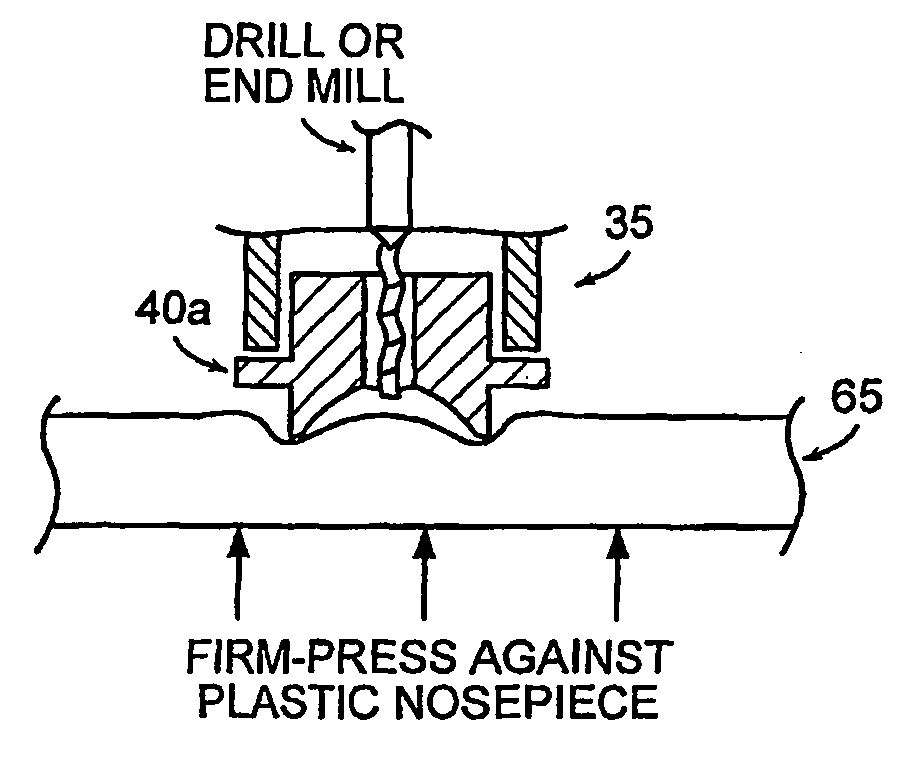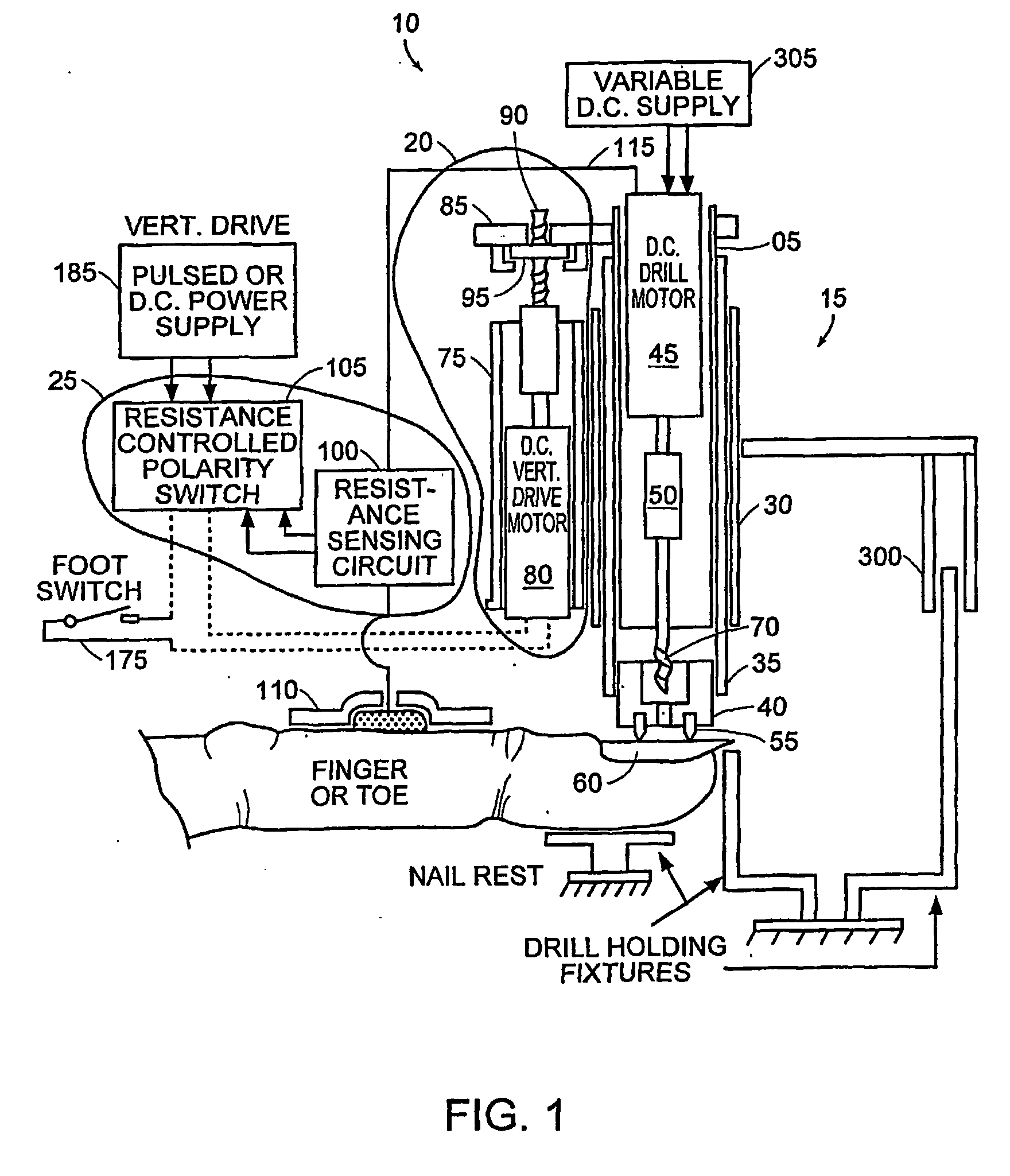Drill device and method for forming microconduits
a drilling device and microconductor technology, applied in the field of drilling devices and methods for forming microconductor, can solve the problems of common clinical problems such as the low rate of drug transport through the stratum corneum, and achieve the effect of reducing electrical impedance and allowing long-term drug diffusion
- Summary
- Abstract
- Description
- Claims
- Application Information
AI Technical Summary
Benefits of technology
Problems solved by technology
Method used
Image
Examples
experiment 1
Controlled Microconduit Drilling through Nails
[0076] A number of experiments have been done with mechanically drilling holes through the nail. FIG. 7 shows a normally scised micro conduit that is 550-600 μm in diameter next to a 160 μm diameter micro conduit that was drilled in the overhang of a left ring finger using a 0.006 inches in diameter (150 μm) twist drill in a precision drill press.
[0077] This approach has the advantages of making smaller size openings and permitting mechanical measurement of the drill depth below the surface of the nail via dial indicator monitoring. Also, depth determination into the nail bed can be determined through electrical resistance (impedance) measurements. An electrical contact to the quill of the drill press was established by using a ball bearing on a flex spring to permit real time resistance measurement with the rotating quill / chuck / drill. Thus, using an ECG electrode on the skin of the wrist as reported earlier, one can measure the elect...
experiment 2
Auto-Stop / Reverse of Microconduit Drilling
[0110] In order to move on to the Resistance Altimeter experiments, a comparator / relay circuit was fabricated to sense the ohmic resistance from the drill bit through the finger / toe to a nearby ECG patch adhered to the hand / foot. By using a relay and an amplifier / comparator chip, a potentiometer reference can be adjusted to essentially set the electrical resistance trigger ohmic value to flip the relay. The relay is hooked to a reversing relay (DPDT) to reverse the vertical drive motor. Thus, nail drilling is begun by stepping the vertical drive motor to move the drill motor down, pressing the spinning drill against the nail. As drilling proceeds, a depth is reached where the drill bit-to-body-to-ECG electrode electrical resistance begins to drop from about 3-6 meg ohms toward 100 K ohms, on down to the 10 / 20 K ohm range as the drill bit moves through the nail and into the increasingly living nail bed structure. At whatever predetermined e...
experiment 3
Drilling Dry vs. Wet Nail
[0138] A couple of test drillings began through subject's left hand pinky overhang which measures 16-17 mils thick. Using the same drill that was reported on after approximately 12 drillings, the first experiment was to simply drill through dry and see how many down pulses it took (the drill motor was running at 10 volts.). Drilling ended after 40 down pulses, the hole was partially through (est. 10 mils) and had a black bottom.
[0139] The next test was to use the same drill and hydrate the nail in the standard way (3 acetone rinses and blow-dry, 3 methanol rinses and blow-dry, 10 minute H2O soak). Again, although drilling in water, drilling ended after 50 down pulses. Here the hole was slightly deeper, not black on the bottom, but not through.
[0140] During both tests, it was noticed that the motor current never exceeded about 90 ma, where it usually pegs the 100 ma meter after each down step. This implies a really dull drill that is wearing, rather than ...
PUM
 Login to View More
Login to View More Abstract
Description
Claims
Application Information
 Login to View More
Login to View More - R&D
- Intellectual Property
- Life Sciences
- Materials
- Tech Scout
- Unparalleled Data Quality
- Higher Quality Content
- 60% Fewer Hallucinations
Browse by: Latest US Patents, China's latest patents, Technical Efficacy Thesaurus, Application Domain, Technology Topic, Popular Technical Reports.
© 2025 PatSnap. All rights reserved.Legal|Privacy policy|Modern Slavery Act Transparency Statement|Sitemap|About US| Contact US: help@patsnap.com



